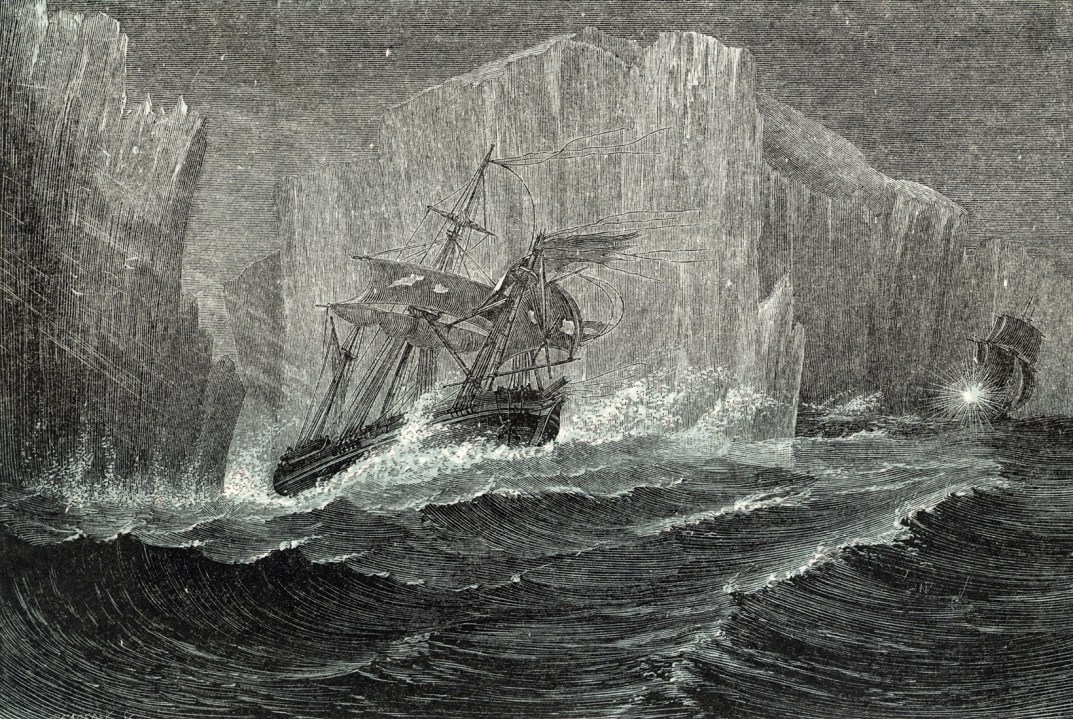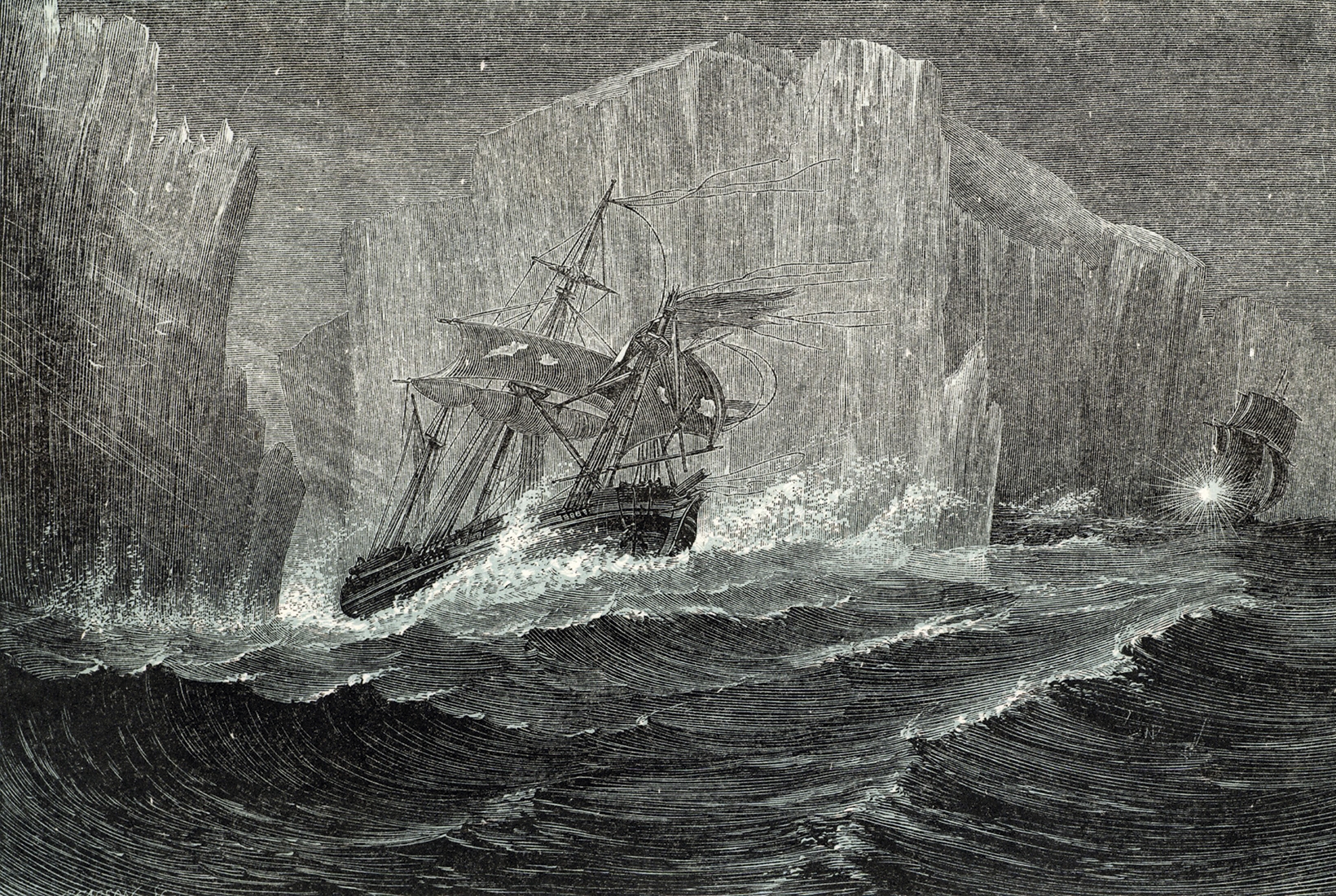How refreshing in a time of general sensitivity to find a book intended to infuriate and debunk. Welcome to the desolate Canadian Arctic, to the mystery of the Franklin expedition, which disappeared in 1845 seeking the North-West Passage, and to a world of disagreement about what happened to it.
Ernest Coleman’s story of his search for clues to Franklin’s fate is delightfully prejudiced and pugnacious. The purpose of No Earthly Pole is, he writes, ‘to speak out in opposition to the clustering together of some academics and experts who have closed their minds’. Middle-aged lieutenant goes to the ends of the earth to defend the reputation of Queen Victoria’s Navy would make a lovely film.
The backstory: HMS Erebus and HMS Terror, carrying 129 men under Sir John Franklin, were last seen by whalers in Baffin Bay in July 1845. There was no further recorded sighting until the discovery of the wreck of Erebus in 2014 and of Terror two years later. Notes left ashore reported the ships surrounded by ice in 1846, Franklin dying in 1847 and survivors setting out to walk south in 1848. They never made it to safety.
Coleman is convinced he has found Franklin’s grave – but it turns out to be a pile of rocks over a lemming’s burrow
In subsequent years countless searchers, ships and coffers of treasure produced graves, skeletons, relics and rumours. An entire industry has been built on supposition: that the starving sailors turned cannibals; that they foolishly disdained to learn from the Netsilik Inuit, or were massacred by them; that they went mad, poisoned by lead from their tinned food. There is material to support any number of theories.
Enter Ernest Coleman FRGS, dauntless explorer and rumbustious despiser of academe, an Arctic Eddie the Eagle. The first half of No Earthly Pole is an account of his expeditions to the bitter archipelago where Franklin and his men perished. His arrival each time seems to be dreaded by various officials there. Short of funds, long on conviction (the navy is unimpeachable, academics are fools), Coleman strides out across the tundra to see what he can find.
Fog, bog and mishap befall him. He survives for ten days on Fisherman’s Friends. He discovers cairns, hummocks and dips which could be connected to the expedition (but Franklin searchers have often built cairns, which is confusing). Rescued by forbearing Canadian pilots, he returns home to give talks; he embarrasses other Franklin buffs when he buttonholes them at lectures; he forges alliances — including with Peter Wadhams, an authority on sea ice — and plans his next mission.
One of the best stories is of Coleman, in horrendous terrain, engaging a local guide, the reluctant Paul, and hiring three-wheeler bikes. One breaks down. Coleman continues the journey ‘lying full-length and face down on a trailer — a bad mistake’. He is battered to hell. One feels Paul grinning. Michael Palin once wrote a book about Erebus; but what we really want is Palin, in his prime, playing Coleman in this comedy.
On another trip, Coleman is finally convinced he has discovered the grail — Franklin’s grave — alongside possible burial mounds. Wadhams thinks it worth another journey. The grave turns out to be a pile of fallen rocks over a lemming burrow. The mounds are drumlins, say the archaeologists, without really investigating them. Coleman holds fast to his belief.
In the second half of the book he questions various well-worn theories. Though his scoffing sometimes palls, his deep knowledge is impressive. He argues convincingly against the idea that the sailors suffered lead poisoning from poorly soldered cans, while the idea of any crew member eating another is anathema to him — so the incisions found on their bones must have been inflicted by the Inuit. Handed-down Netsilik stories of starving men and massacres neither confirm nor deny the idea, but Coleman presents a plausible case.
His gloriously archaic naval-mindedness also works to his advantage. If anyone could approach the thinking of Franklin’s crew about where to site camps and cairns it is surely he. But whether they failed to copy the survival techniques of the Inuit we shall never know. By the end of the book, the mystery seems a bit like Cluedo for the Arctic-inclined. And it’s not to disparage the brave missing to suggest that even they might have marvelled at the world’s obsession with their fate.
Coleman’s shoestring expeditions place him in the great tradition of explorers. He scours the wilderness, mostly alone and on foot, reads everything and comes to conclusions about the fate of the expedition that are just as plausible as those of the formally qualified people who probably laugh at him. He deserves a biopic.







Comments